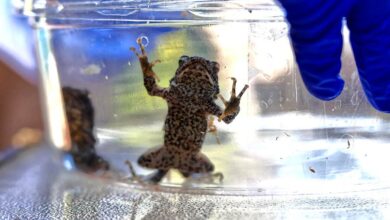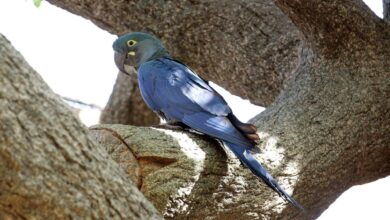Vaccines for Bees, how do they Work?
The biotech company Dalan Animal Health developed the first vaccine for bees to protect honeybees from viruses and bacteria. This is an initiative that proposes solutions to the crisis caused by the death of pollinators.

Photo: Pexels
LatinAmerican Post | Julieta Gutiérrez
Escucha este artículo
Leer en español: Vacuna para abejas, ¿Cómo funcionan?
Bees are one essential invertebrate animal for the food chain since they are responsible for pollinating many crops that produce food for all living beings. However, in recent years, it has been inevitable to see the massive death of bee colonies, which has caused concern throughout the world.
Studies have been conducted that have identified multiple causes for declines in bee populations, such as habitat loss, decreased plant diversity, overuse of pesticides, and exposure to diseases and parasites, as well as climate change.
We recommend you read: Pollinators at silent risk of extinction: an environmental catastrophe
Pathogens such as viruses, mites, fungi, and bacteria are primarily responsible for diseases in honey bee colonies, the bee species with the highest pollen distribution in the world.
In addition, it is highlighted that the American foulbrood disease (AFB), which is caused by the bacterium Paenibacillus larvae, is one of the most harmful and feared diseases in the world because it is a very contagious pest that affects young bees and is capable of infecting new healthy larvae.
This bacterium has two life forms: a vegetative (growth and multiplication) and a sporular (resistance). This latter form of life renders antibiotics ineffective in treating it, and once a hive is infected with this disease, all that remains is to burn it to eradicate and prevent its spread.
Fortunately, the biotech company Dalan Animal Health received a conditional license from the United States Department of Agriculture (USDA). The company succeeded in developing a first-of-its-kind vaccine that fights deadly infectious diseases like American foulbrood.
How Does the First Vaccine for Honey Bees Work?
Dalan Animal Health's vaccine science, suitable for organic farming, exposes queen bees to dead cells of the bacterium Paenibacillus larvae, helping hatched larvae in the hive to withstand infection.
The bee vaccine is provided in a mixture of royal jelly (the component secreted by the glands of young worker bees) and is the food for the queen bee. So, for the vaccine to be effective, it is placed in the queen's ovaries; this causes the developing larvae to gain immunity as they hatch.
In addition, this vaccine provides safety benefits for the hive because:
- Provides immunization and survival of the queen bee.
- Feeding is given at the colony level.
- It is straightforward to use the vaccine.
- It is a chemical-free, non-GMO, and organic product.
- It is qualified for organic farming.
What is the Importance of the Bee Vaccine?
This type of vaccine for bees is essential because diseases and bacteria such as American foulbrood put the existence of these crucial pollinators at significant risk.
Because the production of various fruits and vegetables depends on them, according to the Food and Agriculture Organization of the United Nations, a third of world agricultural production needs pollinators such as bees, bats, and birds; bees being a third of all these animals. So, not intervening to prevent the decline of bee populations could have severe economic and environmental consequences.
And to speak more precisely, 90% of flowering plants, 75% of food crops worldwide, and 35% of agricultural land depend on the pollination process, according to UN figures.
In conclusion, healthy bees provide food security for the economy and all living things and are essential for conserving the world's biodiversity.





